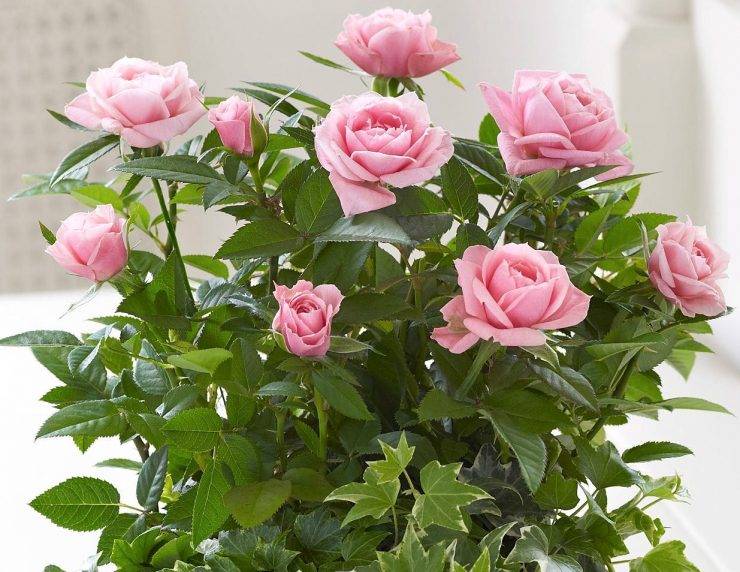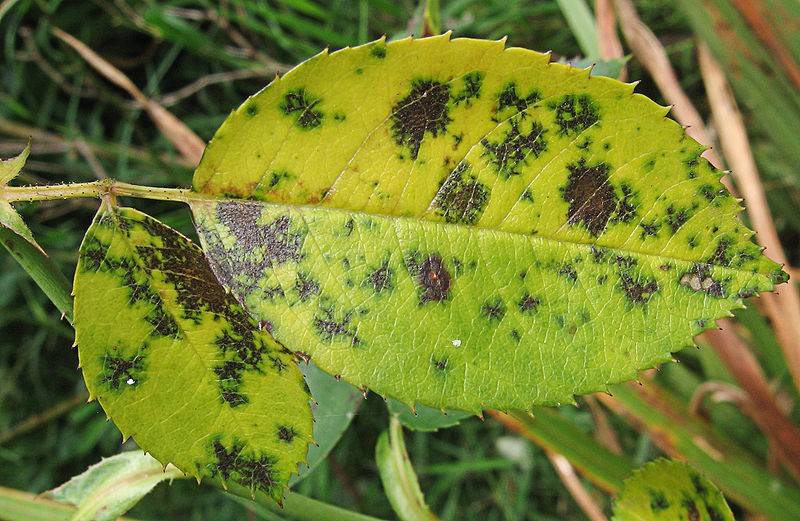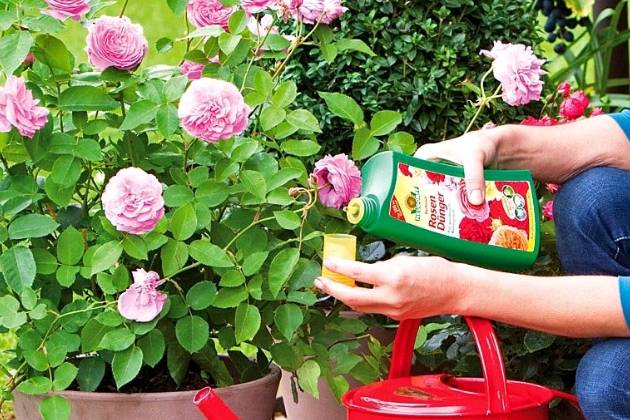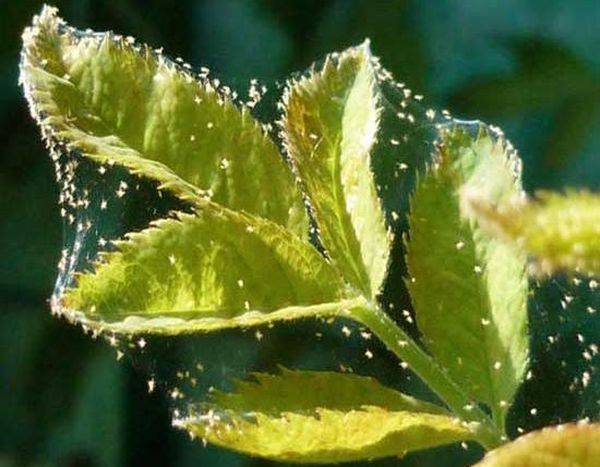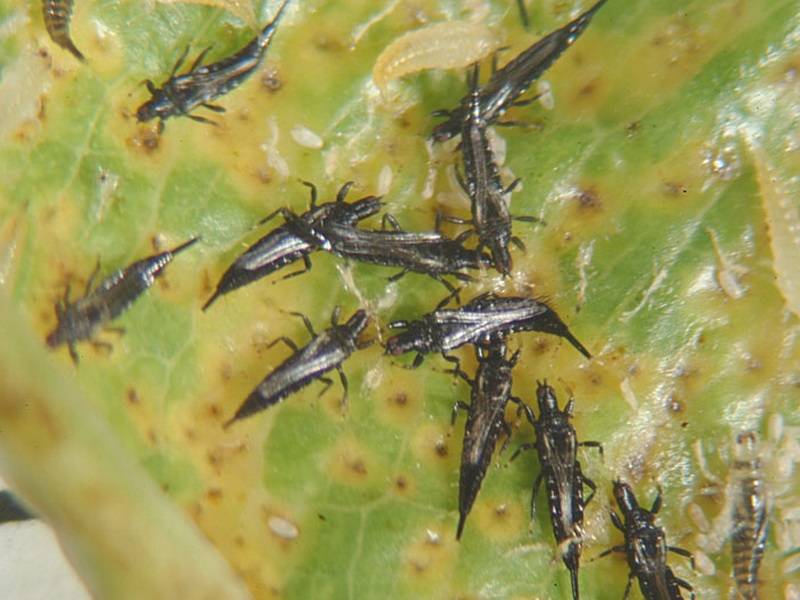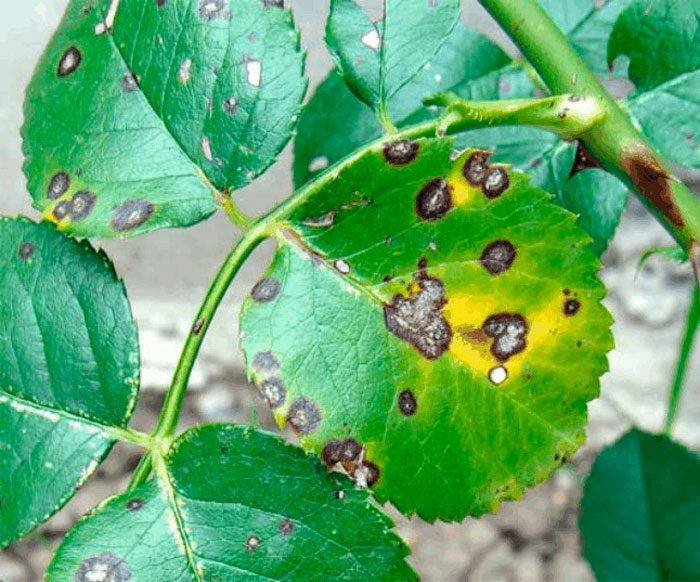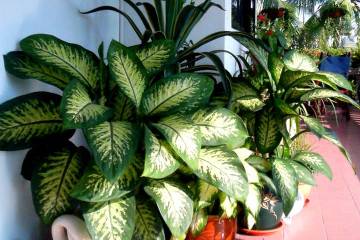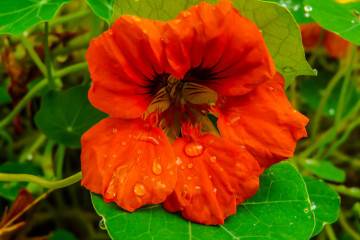Why do the leaves of a room rose turn yellow and a cobweb appears
Content:
- The nature of yellowing of the leaves of a room rose
- Poor grooming as a cause of yellowing and falling leaves in a home rose
- Spider mite on a room rose and yellow leaves
- What to do if a cobweb appears on a rose and the leaves turn yellow
- Other pests causing yellowing and shedding of foliage
- Viral and fungal diseases, due to which mini roses turn yellow and wither
- Preventive measures to prevent yellow leaves
Novice flower growers are often interested in why the leaves of a room rose turn yellow. There can be quite a few reasons for this phenomenon - violation of the rules of plant care, pest attacks, the development of fungal or viral diseases. To cope with the problem, you need to establish a provoking factor.
The nature of yellowing of the leaves of a room rose
The yellowing of the leaves, depending on the provoking factor, is different. The leaves of the flower turn completely yellow with a lack of iron. Partial color change is due to a deficiency of manganese or magnesium. With a nitrogen deficiency, the spots become black and have yellow blotches.
Poor care as a cause of yellowing and falling leaves in a home rose
When growing a rose at home, many growers are faced with a change in the color of its leaves. Improper plant care can be the cause of problems.
Unfavorable indoor climatic conditions
Rose leaves can wither and look unattractive due to the influence of the following factors:
- increased dryness of the air. Indoor roses need high humidity. For this, the plants should be sprayed with water. It is recommended to do this in the evenings. You can also place containers filled with water between the pots. Once a week, the flower needs a warm shower. In the heat, the plant should be sprayed in the morning and evening. In winter, this procedure should not be carried out;
- lack of light. In order for the culture to fully develop, it must be in the sun for 5-6 hours. For this, it is recommended to put it on the western or southwestern windowsill. In the south, too much direct sunlight causes the buds to open quickly and dry out quickly. With a lack of light, the leaves turn yellow from the shaded side. In spring and summer, the plant should be taken out to the balcony or loggia;
- drafts. Under the influence of this factor, foliage can turn yellow. Also, the bush can shed its leaves. If you cannot avoid drafts, it is worth making a paper screen at the height of the plant;
- direct sunlight. They can scorch the leaves, causing them to burn. As a result, yellow and brown spots will appear on their surface. Affected leaves may dry out and fall off. To avoid such problems, the container with the plant should be moved to the southeast or southwest.
Stagnant moisture due to over-watering or poor drainage
Excessive moisture leads to yellowing and leaf fall. This situation is observed with too frequent or abundant watering.To avoid stagnant moisture, it is worth making a high-quality drainage layer. It is important that the bottom of the pot has drainage holes.
Incorrect transplant
It is not recommended to transplant a houseplant immediately after purchase. He needs some time to adapt to new conditions. The air in the living quarters is drier than in the store. In winter, heating sources are additionally used.
At the stage of adaptation, the flower must be placed on the southwestern windowsill or taken out to the balcony for 5-7 days. If the plant looks healthy, it can be replanted. The procedure is carried out by transshipment. This helps to avoid root damage.
For transplanting, it is worth using a universal substrate with neutral acidity parameters or a ready-made mixture intended for roses. Expanded clay is used as drainage. The thickness of this layer should be 1 cm. After transplanting, the flower should be placed in a cool shaded place for 1-2 days.
Nutrient Deficiency
Leaves can wither and turn yellow due to the lack of useful elements. In this case, it is necessary to make top dressing.
Nitrogen
Lack of nitrogen is most often observed in spring. This condition is accompanied by pallor and yellowing of the leaves. The color change starts from the lower leaves. Gradually it moves up. To replenish the nitrogen deficiency, it is worth adding urea. You can also use a generic remedy.
Potassium
This substance helps to strengthen the plant. Timely potassium supplementation helps to survive the winter. With a lack of this substance, problems arise with the formation of buds. In this case, the edges of the leaves can turn yellow, dry and fall off. Shoots and stems turn black, and the leaves that appear turn red.
Iron
With a sufficient amount of iron, the plants become strong and do not get sick. The lack of this substance provokes the appearance of chlorosis. With this pathology, the foliage turns yellow, dries and becomes smaller.
Iron deficiency is experienced primarily by young plants. Over time, yellowness affects adult leaves. Chlorosis is accompanied by a slowdown in the development of a rose and a loss of green mass. Most often, the culture experiences a lack of iron when grown in alkaline soil.
Manganese
With a deficiency of manganese, old leaves turn yellow first. In this case, yellowness appears between the veins and moves from the edges to the central part. There is greenery around the veins.
This problem most often appears when planting in alkaline soil or using a lot of lime when planting. To cope with the violation, you need to add a solution of manganese sulfate.
Magnesium
Magnesium deficiency is most often observed when growing crops in acidic soil. Lack of substance first affects old leaves, then young ones. This problem manifests itself in the form of colorless spots. Red-yellow spots are present between the veins, while the edges of the leaves remain green.
To normalize the content of the element in the soil, ash and magnesium sulfate should be used. It is important to consider that with an excess of this substance, problems arise with the absorption of potassium, therefore it is so important to adhere to the optimal dosage.
Too frequent feeding
With an excessive amount of nitrogen, the so-called fattening of the culture begins, while the rapid development of branches and leaves is observed. Rose spends a lot of energy on building up green mass. This makes it difficult to form flowers and buds. In addition, a large amount of nitrogen provokes the development of fungi in the soil.
Spider mite on a room rose and yellow leaves
Spider mites can infect the culture. This pest often leads to yellowing of foliage and other problems.
Why does spider mite appear
An insect can appear in conditions of increased dry air. High indoor temperatures and a large number of plants also contribute to his attacks.
The main signs of the appearance of a pest
The parasites settle on the underside of the leaves and spread cobwebs along the branches of the rose, while the leaves turn yellow and dry out. Shoot death may also occur.
What to do if a cobweb appears on a rose and the leaves turn yellow
Many growers are interested in how to deal with cobwebs on a room rose. There are a number of remedies that can help save the plant from pests. You can choose a specific method depending on the degree of damage to the culture.
Chemicals
Before using chemicals, it is worth studying their characteristics and methods of application. To get rid of parasites, you should apply the following:
- actellic. This tool protects the culture for 10-20 days. Planting needs to be processed with a temporary break. The substance is strictly forbidden to use indoors, since the product has toxic properties. To combat spider mites, a special solution must be made. To do this, you need to dilute 1 ampoule of the product in 1 liter of water;
- fitoverm. This is a completely harmless remedy that will help save the plant. To do this, you need to carry out 2 treatments. To prepare the solution, you need to mix 5 ml of the product with 2.5 liters of water.
Folk remedies
Garlic infusion is considered an effective folk remedy for the treatment of tea rose. For its manufacture, 500 g of raw materials should be mixed with 3 liters of water. It is recommended to infuse the product at a temperature of 20-25 ° C. This should be done for 5-7 days.
For the treatment of bushes, a concentrated product must be mixed with water. For 20 ml of concentrate, take 3 liters of liquid. It is permissible to spray with a means not only the rose itself, but also the soil around it.
You can also use soapy water. This substance is used to treat foliage and shoots. To make the composition, you need to take laundry soap, grind it with a grater and mix with warm water.
Other pests causing yellowing and shedding of foliage
Leaves may turn yellow and fall off due to attacks from the following pests:
- thrips. These insects appear when the temperature regime is violated. With an increase in temperature and a decrease in humidity, the leaves are covered with a silvery bloom. As a result, the bush appears to turn yellow. To cope with the problem, it is worth using an insecticide;
- cicadas. They appear at elevated indoor temperatures. If white spots appear on the leaves, you need to treat the bush with soapy water. When the leaves fall, only insecticides will help.
Viral and fungal diseases, due to which mini roses turn yellow and wither
The following pathologies can lead to yellowing of leaves:
- rust. With this pathology, leaves fall off, yellow or red spots are formed. Fungicides will help to cope with the problem;
- powdery mildew.With the development of the disease, all parts of the plant should be treated with a fungicide;
- black spot. When this infection appears, yellowing of the leaves and the formation of dark spots on them are observed. A diseased plant does not tolerate winter well and grows with difficulty. Any systemic fungicide will help to cope with the pathology.
Preventive measures to prevent yellow leaves
To avoid yellowing of the leaves, you need to provide the rose with quality care. To do this, you should follow these rules:
- from October to February, provide the plant with rest;
- after the end of flowering, abandon watering and trim the shoots to 10 cm;
- cut roses 2 times a year - before wintering and during flowering;
- to strengthen the immune system, use biostimulants - zircon or epin.
The yellowing of the leaf plates can be the result of various factors. Disorders in care, pest attacks, and the development of diseases lead to this problem. To cope with the deviation, it is necessary to establish the provoking factor in a timely manner.
